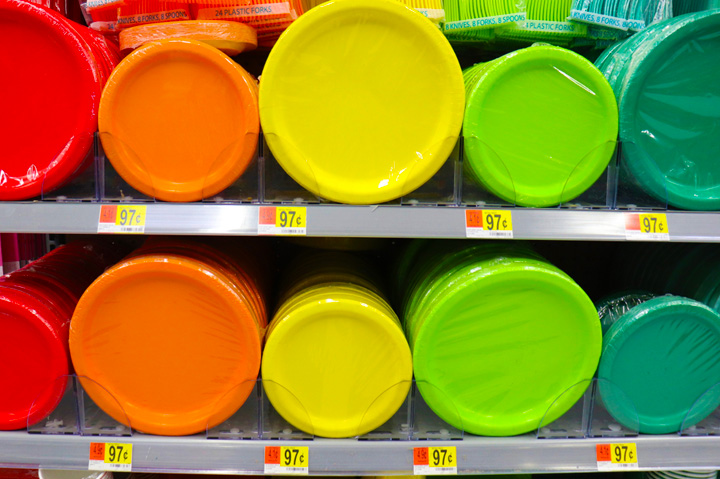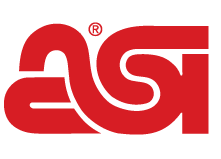June 20, 2024
Tech Print Disruption Rears in Digital Retail Labels & Online Tax Forms
Walmart just added digital price labels and the IRS is shifting more document submission online, but it’s not dire for the print industry.
There were a few pieces of news this week affecting the print industry status quo.
Walmart revealed that it will introduce electronic labels for its aisles to be able to change displayed labels and prices within seconds. At the same time, the IRS announced the continued shift away from paper tax forms that need to be sent via mail, which could decrease demand for related products like envelopes, too.

The usual threat to print is digitalization. And while the IRS is continuing to take steps toward a paperless (or at least less paper-reliant) future, it’s not a death knell for the print industry, or even a huge upheaval from what printers are doing already, industry executives said.
Meanwhile, in a print market that’s working to adapt against sweeping technological innovations, labels are one of the product categories that are generally less prone to disruption. Forms and other products can be digital, but labels on products in the health care and retail space remain as they have always been – for the most part.
Still, the niche is not immune from all digital change. While labels on consumer products likely won’t go away as a result of technology, the grocery store experience might look a little different – a fact emphasized by Walmart’s introduction of electronic labels.
These labels enable Walmart to change the price of products at the drop of a hat to meet demand. “If it’s hot outside, we can raise the price of water and ice cream,” grocery store analyst Phil Lempert told NPR. “If there’s something that’s close to the expiration date, we can lower the price – that’s the good news.”
The sudden normality of surge pricing brought on by gig economy businesses like Uber isn’t the only reason Walmart is going digital on aisles labels, though. The massive chain retailer also hopes the move will free up time for employees to handle different tasks, rather than walking around stores replacing labels one by one every time a price changes or a product is discontinued, or to create consistency between in-store and online pricing.
“I will tell you one of the reasons for the label industry being so hot right now: It is far less subject to technological obsolescence than the print industry.” Jim Anderson, Corporate Development Associates
Santiago Gallino, a professor of retail management at the University of Pennsylvania’s Wharton School of Business, told NPR that minimizing the time it takes for employees to do certain tasks would save the business money in the long run, too.
“The bottom line, at least where I talk to retailers, is the calculation of the amount of labor that they’re going to save by incorporating this,” Gallino said. “And in that sense, I don’t think that this is something that only large corporations like Walmart or Target can benefit from. I think that smaller chains can also see the potential benefit of it.”
Electronic labels are already on display in Whole Foods and Amazon Fresh locations, as well as some grocery stores in Europe, where single-use paper and plastic legislation is sweeping through the food and beverage industry.
Label printing as a viable option in print is not going away. It’s worth noting, though, how technology can disrupt areas where you might not have suspected it was possible. However, for actual consumer products on the shelves, labels are not easily replaced.
If there were still a “future-proof” segment of printing, labels would be a good bet.
To wit: Jim Anderson, founder and president of Corporate Development Associates, shared that the label industry’s resilience within print is what makes it so appealing to acquiring companies or private equity. “I will tell you one of the reasons for the label industry being so hot right now: It is far less subject to technological obsolescence than the print industry,” he said.
IRS Introduces Digital Document Upload Tool
Other print products, though, are more subject to digital disruption.
This week, the IRS announced that it has a new Document Upload Tool for taxpayers to submit documents to the IRS digitally rather than through the mail. IRS commissioner Danny Werfel reportedly said that the initiative was “part of our ambitious initiative to transform the IRS into a virtually paperless agency, and we continue to see increased use of this by taxpayers,” according to the Federal News Network.
In a panel discussion about IRS IT modernization hosted by the National Taxpayers Union Federation, an IRS official said that the amount of submissions via internet is already “making a dent” in the amount of paper that is lost in the mail.
The IRS estimated that more than 94% of individual taxpayers don’t need to send physical paper to the agency anymore, and that over 100 forms typically sent on paper can be digitized every year.
“People say, ‘Oh, you’re just digitizing paper.’ Yes, but we’re providing access to it,” Darnita Trower, IRS director of emerging programs and initiatives, told the Federal News Network. “Think about all the times a taxpayer has called and you need something. Someone, somewhere, has to make a request to files, to go pull the file and get that piece of paper. We are now providing data at your fingertips. You can just go to the screen search for it and render it as long as you have the security rights to do so.”
The IRS will still process paper forms for people who choose, but said it does not want to make it the default method.
The IRS estimates that
94%
of individual taxpayers don’t need to send physical paper to the agency anymore.
“It’s a two-pronged approach – reducing the amount of paper that we have coming into the organization and files that we’re storing,” said Wanda Brown, project director of Inflation Reduction Act Implementation for the IRS’ Wage and Investment division. “Being able to scan some of that paper, that helps us make data available – information and images available for our employees – so they can assist the taxpayers.”
Effective this year, the IRS lowered the e-filing threshold, requiring businesses to file their federal tax form electronically if filing 10 or more forms, decreasing demand for tax forms for small businesses.
Over the next year, the IRS plans to make another 150 forms mobile-adaptive. During that time, even with the changes in demand for paper products, print distributors have plenty of value for their clients.
“With the IRS and supply chain issues causing disruptive changes to the industry over the past few years, we have seen that expert support, dedication to our customers, early planning and timely communication [are] key to helping distributors supply tax forms through the hectic tax season,” said Melodie Keizer, brand manager for Nelco in Grand Rapids, MI.
And since the IRS is giving customers the option of mailing in forms if they choose, there will still be demand for envelopes. Print suppliers advise distributors to keep their inventory available for when those customers come calling.
“When inventory gets low, replenishment can take a little while,” said Jessica Wenz, product marketing manager for Wilmer in Coldwater, OH. “The common mistakes that we have come across have been with envelopes. Either [they don’t fit] the forms properly, or customers ordered the wrong envelope for their forms. From the start, it would be helpful to list the forms that your envelopes are compatible with.”
Print suppliers and distributors are accustomed to changes and challenges. The real steps they can take even when technology disrupts the status quo are to look for continued and new opportunities, and to be ready for their customers when they need a product of a particular specification.
